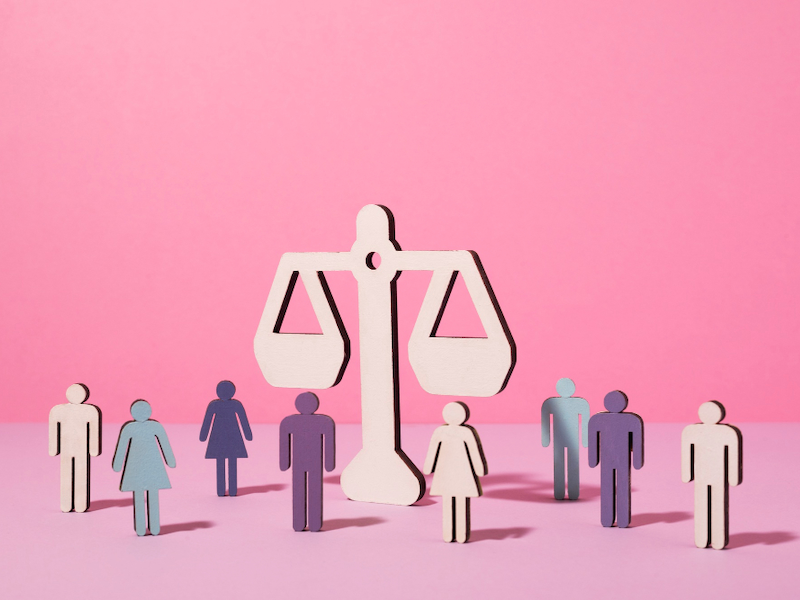In a world where we are competing for the best talent to solve the world’s most challenging problems, we must disrupt or be disrupted.
Companies that actively promote inclusivity in recruiting are 45% more likely to report market share growth in one year. A survey conducted by Glassdoor found that 67% of candidates consider how diverse a company is when evaluating job offers. Recruitment is one aspect, but retaining talent is an additional challenge, staff will not stay in organisations where they must endure death by a thousand paper cuts, as microaggressions are often described.
Microaggressions are statements, actions, or incidents regarded as an instance of indirect, subtle, or unintentional discrimination against members of an underrepresented group such as women and those from ethnically diverse backgrounds. An example of a microaggression is when two colleagues walk into a meeting, and it is automatically assumed that the white male colleague is more senior, and the colleague who is a woman, or from an ethnically diverse background must correct them. If this happens repeatedly alongside other microaggressions, the person who is on the receiving end of the microaggression can feel that they must constantly justify themselves and navigate stereotypes of what someone in a senior position looks like, which can make them feel that they don’t belong and negatively impact their productivity.
So, what can leaders do to reduce these instances of microaggressions in the workplace? Here are some tips:
1. Educate yourself and others on what microaggressions are and create environments that do not tolerate them.
Microaggressions can look like the 4 D’s below. When you notice any of these microaggressions, do ‘call them in’, even if you are unable to do something at that moment, go back to the person involved and use your curiosity to understand where they were coming from you and educate them to do better, with compassion and empathy. Be prepared for the discomfort that you will experience from ‘calling in’ behaviour, the reward for doing so is that with practise it will become something that comes naturally, and it has the potential to give others the opportunity to change for the better. As a leader your actions speak louder than your words, role model the behaviours that you want to see in others:
- The double takes – Assuming that a colleague isn’t senior because they are from an underrepresented group “This meeting is for grade x only, you must be in the wrong room.”
Example of Calling in: What would make you question their grade; the meeting invites to the people who should be in the room?
- The doubting – Questioning colleagues from underrepresented groups on their education as their level of intelligence surpasses others’ biased expectations of them. ‘You’re really intelligent aren’t you, what university/school did you attend, you’re so articulate’.
Example of Calling in: Everyone here is intelligent we only recruit the best, if you want to give your colleague a compliment let’s make it constructive.
- The dismissals – When someone from an underrepresented group shares an experience of pay discrimination, and they receive the response ‘Why are you worrying about a pay rise, your partner can support you can’t they?’
Example of Calling in: You may not have meant to offend, but referencing someone’s partner is not relevant in pay discussion or decisions, let’s factually assess who has earned a pay rise.
- The domain – Your environment illustrates that certain people succeed there, illustrated by the books on the shelves, the photos of past post holders on the wall and so much more.
Example of Calling in: We seem to only buy books from certain authors, are we inadvertently saying that wisdom only comes from one part of the world? How can we change this?
2. Embody radical humility
As a leader, being humble and admitting mistakes and flaws can be a game changer when you are wanting to build connections to unearth and eliminate workplace microaggressions. Humility can help your staff feel psychologically safe enough to speak up and know that there won’t experience adverse consequences because of doing so. Another aspect of humility is recognising where you have advantage, for example as a white woman you may experience sexism, but you won’t experience racism. In spaces where you see racism at play you can use your advantage to advocate for others.
3. Be bias aware
We all hold biases, it’s important to increase your awareness of these biases in yourselves and others and employ strategies to interrupt them:
- affinity bias: recruiting and promoting in your image.
- prove it again bias: asking those from an underrepresented group to prove themselves over and above what you would ask of those in the majority group to do.
- tightrope bias: where only a very narrow set of behaviours are accepted, so mistakes by someone from an underrepresented group will be judged more harshly than their majority group colleagues.
Reducing microaggressions is a step toward enabling leaders to recruit, manage and promote differently resulting in more inclusive, productive, and profitable workplaces.
 About the author
About the author
Jenny Garrett OBE is an award-winning career coach, leadership trainer, speaker & author of Equality vs Equity: Tackling Issues of Race in the Workplace.









